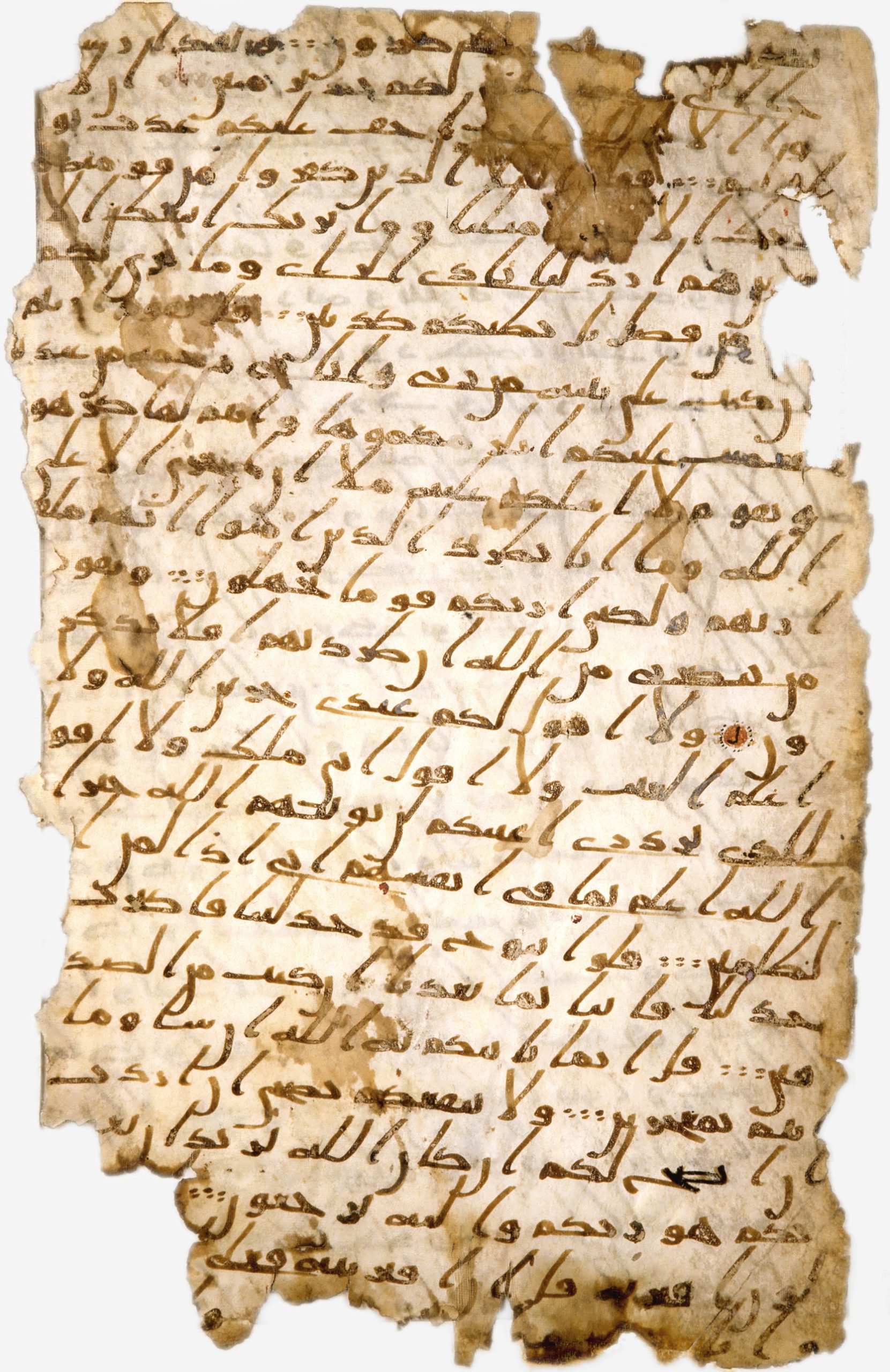 Print Page
Print Page
 Print Page
Print Page
Location: probably the Hijaz
Materials: ink on vellum
Dimensions: 32.5 x 20.5cm (maximum)
Accession Number: KFQ 60
Other Notes:
Text: surah Hud (XI), verses 14 (middle) – 24 (middle).
In his Fihrist, the 10th-century Baghdadi bibliographer, al-Nadim, gave an account of the earliest forms of the Arabic script, attributing that with long ascenders and a slant to the right to Mecca and Medina, which has led to the attribution of the present folio to the Hijaz. Inconsistencies of spelling, and marked variations in letter-forms and even in the number of lines from page to page, indicate that the folio was written at a date when Qur’anic calligraphy was still far from standardized.
The text has no vocalization and only occasional diacritical strokes. Six dots, arranged in three groups, separate the verses and the passage of five verses is marked by a red letter alif surrounded by dots. The red circle at the end of every 10 verses may be a later addition.
Script:
copied in Hijazi script; 23 or 25 lines to the page
Bibliography:
F. Déroche, The Abbasid Tradition, Nasser D. Khalili Collection of Islamic Art, vol. I, London 1992, cat.1, pp.29 and 32.
J.M. Rogers, The Arts of Islam. Masterpieces from the Khalili Collection, London 2010, cat.1, pp. 30–31.

